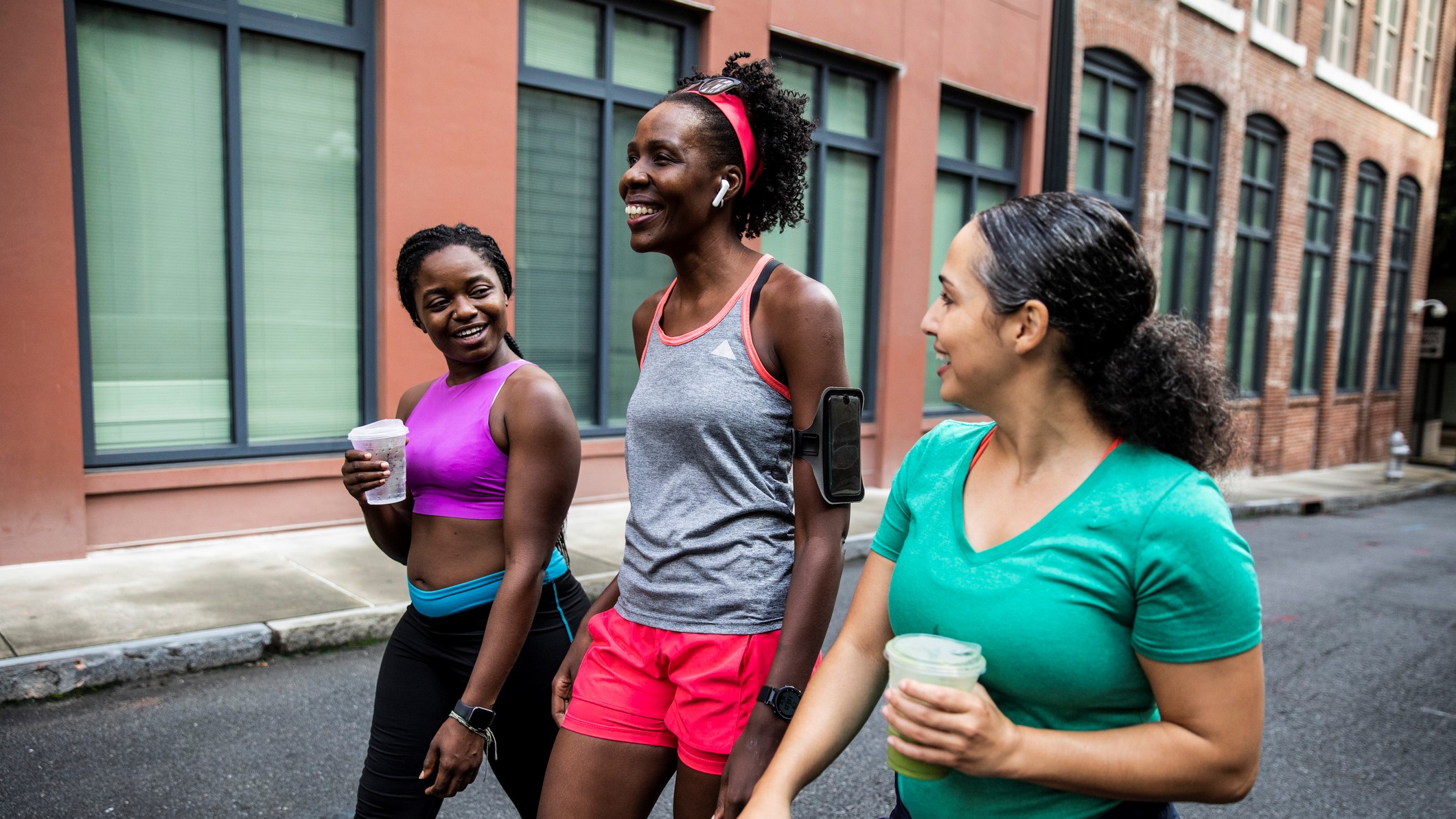A psychiatrist says this one thing about your heart rate could be the secret to living longer — and it might trump your step count

Your HRV, also known as Heart Rate Variability, is, according to Dr. Elisabetta Burchi, about to “become the next vital sign we all track.”
If you haven’t heard of HRV before, this refers to the variation in the intervals between your heartbeats, rather than how often your heart actually beats (beats per minute or BPM).
A “healthy” or “positive” HRV trend shows your nervous system is managing your response to external stimuli and stress accordingly, and can tell you a lot about your cardiovascular health and longevity.
Psychiatrist and neuromodulation expert Dr. Burchi says we’re shifting our approach to health optimization.
While metrics like step count and blood pressure have long been the gold standard of cardiovascular health, fitness trackers and even the best smart rings now focus on a whole lot more, including recovery and HRV.
Here’s why your HRV might be the next big metric that matters if you want to live longer.

Why HRV could be the next step count
There’s been a change in how we think about our health, believes Dr. Burchi, who thinks we are becoming more reactive than preventative. With a 57% spike in HRV searches, our interest in longevity is also on the rise — indicating that we’re beginning to take heart health even more seriously.
Get instant access to breaking news, the hottest reviews, great deals and helpful tips.
And variability can tell you a lot. Although the fluctuations are mostly small, they are essential markers of your autonomic nervous system and overall physiological resilience.
“Specifically, HRV is a proxy for the delicate balance between your 'fight-or-flight' sympathetic activation and the ‘rest-and-digest' parasympathetic response,” explains Dr. Burchi.
“When you inhale, your heart rate ticks up; when you exhale, it slows down – a seesaw orchestrated by the vagus nerve to keep you in balance.”
She explains that the higher the variability between heartbeats, the more easily you navigate stress and recover. “In essence, HRV is a barometer of your nervous system’s resilience.”
When you inhale, your heart rate ticks up; when you exhale, it slows down – a seesaw orchestrated by the vagus nerve to keep you in balance.
Research published in Semantic Scholar suggests that a high HRV is linked with better working memory, overall physical and mental health, ability to handle stress and greater cognitive flexibility.
There’s even science that suggests a link between HRV and emotional regulation, including a lower risk of anxiety or depression. Higher HRV is even correlated with cardiovascular fitness and longevity.
Then there’s low HRV, which means your heartbeats are “more monotonously regular.” This could indicate stress and burnout and has even been linked to a higher mortality risk.
It’s important not to confuse HRV and your heart rate, though, as detailed in Aging. While a high resting heart rate and decreased HRV have been linked to cardiovascular events and higher mortality risk, a low resting heart rate and increased HRV are seen as a positive combination.
How can you increase HRV?
Regulating your nervous system should be a top priority when trying to improve HRV. But in today’s society, that’s far easier said than done.
Firstly, try to focus on lifestyle changes you can control, including regular exercise and a balanced diet. Sleep hygiene is also important, as is managing your stress where possible.
Techniques like breathing exercises and walking workouts can be helpful, while some people find cold water therapy works.
Dr. Burchi explains that activating the vagus nerve increases your HRV by boosting “high-frequency” heart rate oscillations.
“If HRV is the score, the vagus nerve is the coach calling the plays,” she says. “This nerve wanders from the brainstem down into almost every internal organ, carrying the information that it’s safe to relax and dedicate energy to all those other activities that are not related to defense from a challenge.”
“While in our contemporary life, we are constantly pushed to activate our sympathetic response, when we proactively practice mindfulness, self-compassion, meditate, and breathe slowly, it’s the vagus nerve that floods the heart with signals to slow down.
The result? More variability between beats as your heart eases off the gas pedal and idles gently.”
And the good news is that you can stimulate your vagus nerve yourself. I used a vagus nerve stimulator recently and reported on my experience, and these little devices are now everywhere.
Although mine worked by placing the device's electrodes at the pulse point of my neck, Dr. Burci says the outer ear is the place to try.
“Researchers discovered that there’s a branch of the vagus nerve reachable from the surface of the body, specifically, in your outer ear. If you’ve ever felt a weird calm after cleaning your ears or massaging that little ridge on your ear (the tragus or cymba), you might have been stimulating vagus nerve fibres.”
In fact, Nurosym, vagus nerve stimulator developers, published results to show vagus nerve activity jumped by 61% when using their device, by 90% after two months of daily use and HRV increased by 18% on average.
“In the near future, don’t be surprised if HRV-checking becomes as routine as stepping on a scale,” Dr. Burchi says.
Dr. Elisabetta Burchi is a renowned female voice in the fields of psychiatry and neuromodulation. Her publications have been published in The Lancet, one of the top scientific publications.
She has also earned a Master of Business Administration (MBA) from the prestigious INSEAD Business School, with her primary areas of specialization in neuromodulation. She is working on clinical research trials and programs, helping bring non-invasive vagus nerve stimulation to patients and the general public.
More from Tom's Guide
- Surprise! New study reveals that the size of this finger can predict your endurance
- Forget running and swimming — study finds this sport adds 10 years to your life
- Forget running or 'Jeffing' — neuroscientist says this is the secret to longevity and hitting 150 minutes of cardio per week

Sam Hopes is a level 3 qualified trainer, a level 2 Reiki practitioner and fitness editor at Tom's Guide. She is also currently undertaking her Yoga For Athletes training course.
Sam has written for various fitness brands and websites over the years and has experience across brands at Future, such as Live Science, Fit&Well, Coach, and T3.
Having coached at fitness studios like F45 and Virgin Active and personal trained, Sam now primarily teaches outdoor bootcamps, bodyweight, calisthenics and kettlebells.
She also coaches mobility and flexibility classes several times a week and believes that true strength comes from a holistic approach to training your body.
Sam has completed two mixed doubles Hyrox competitions in London and the Netherlands and finished her first doubles attempt in 1:11.
You must confirm your public display name before commenting
Please logout and then login again, you will then be prompted to enter your display name.
